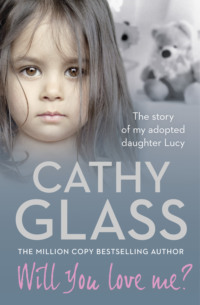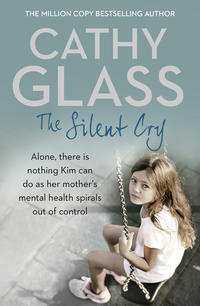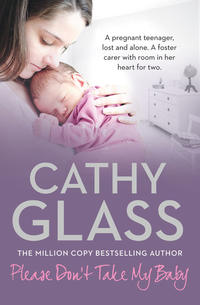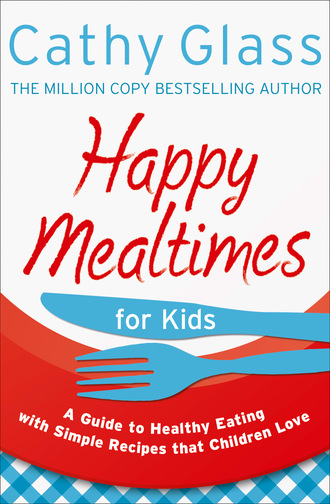
Полная версия
Happy Mealtimes for Kids
The amount of fibre a child needs in their diet is shown below. It will also be listed on most packaged foods. Fibre in the form of bran can be added to a child’s diet but if a child is eating plenty of natural wholesome foods they should be getting the fibre they need. Problems arise if a child consistently eats a diet high in processed food, which contains little or no fibre.
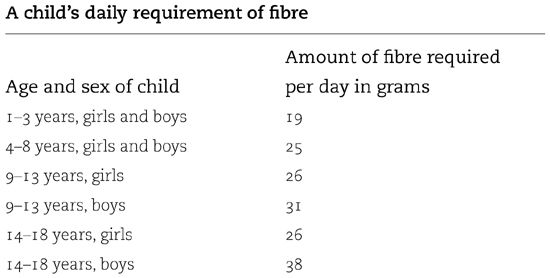
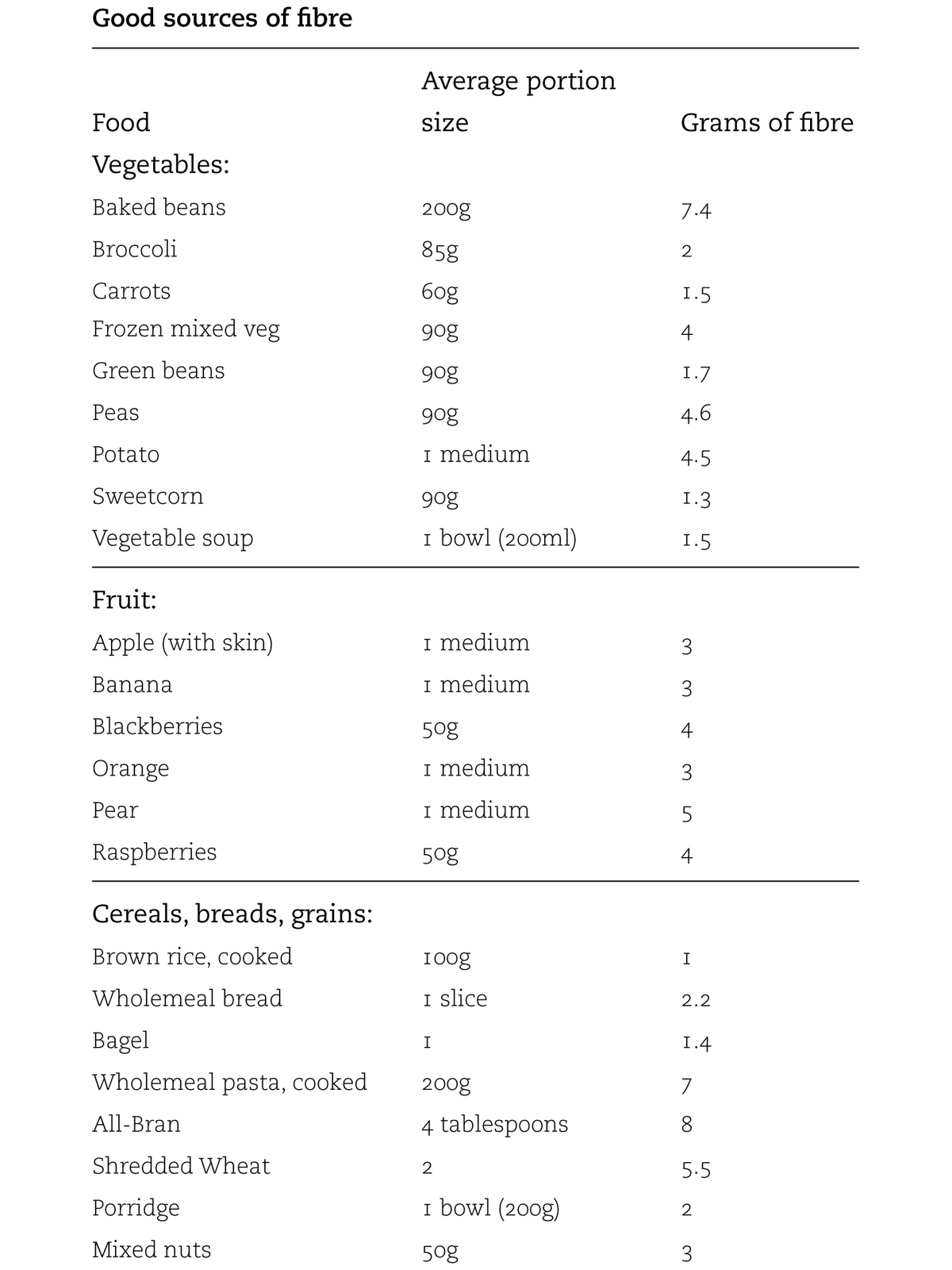
So that if, for example, a child aged eight has two Shredded Wheat for breakfast, sandwiches made from three or four slices of wholemeal bread and a piece of fruit for lunch, and an evening meal of meat and two veg, they will have had their daily requirement of fibre. However, if the same child skips breakfast or has a couple of biscuits, a white bread sandwich and a packet of crisps for lunch, and pasta and cake for the evening meal, their diet will be lacking in fibre, which causes constipation. A general rule is that if the food is plant based then it will have a high fibre content and should be included in a child’s daily diet.
Fat
Fat in children’s (and adults’) diets has had a lot of bad press recently because in the Western world we often eat too much fat. However, fat is an essential component of a well-balanced diet and performs a number of functions:
* Fat is a good source of energy. 1 gram provides 9 calories, which is more than double the calories in protein or carbohydrate.
* Fat transports vitamins A, D, E and K around the body, supplying the body with essential nutrients.
* Fat often makes food taste better.
* Fat is a source of fatty acids (EFAs), which are thought to have a positive effect on the heart and immune system.
* Fat stored in the body protects internal organs as well as being a fuel reserve. Should a child fall sick and not eat properly the body burns the fat for the calories it needs, which is why we can lose weight if we are ill.
Saturated fat is found in lard, butter, hard margarine, cheese, whole milk and anything containing these ingredients, such as cakes, biscuits, pies and chocolate; it is also in the white fat on meat and the skin on poultry. Unsaturated fat comes from vegetable sources and is usually considered a healthier alternative to saturated fat. It is found in sunflower, soya and olive oils, soft margarine and oily fish – for example, mackerel, sardines and salmon. Cod liver oil can be given as a supplement to children and some research suggests it is beneficial to do so.
The amount of fat a child needs is usually considered as a percentage of their daily calorific requirement and it is quite high. See the table below.
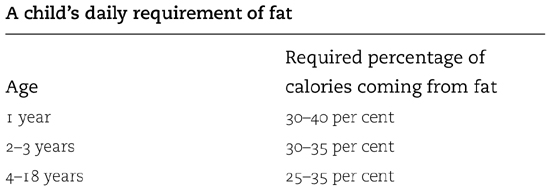
Generally vegetables, fruit (apart from avocados), white fish, grains and cereal contain little or no fat. Examples of good sources of fat are listed below.
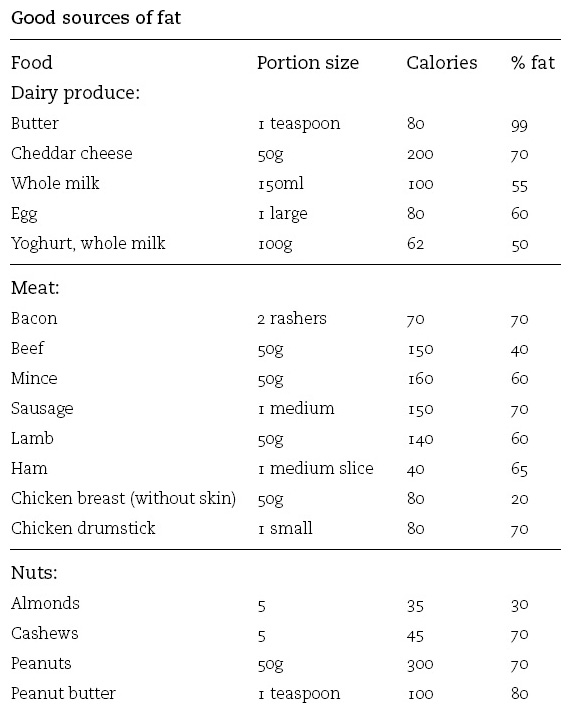
Remember that fat is an essential part of your child’s diet, but if your child is regularly eating too much fat and you are looking to reduce the amount of fat in his or her diet, then try the following:
* Limit cakes, biscuits and savoury snacks, which are high in fat.
* Trim fat off meat and skin off poultry.
* Grill, poach, steam, bake or microwave rather than fry foods.
* Swap whole milk for semi-skimmed.
* Choose low-fat dairy products.
* Use vegetable oil and low-fat spreads rather than lard, butter or hard margarine.
Vitamins and minerals
Vitamins and minerals are needed by the body for growth, repair and staying healthy. They are taken from the food we eat and absorbed by the body. Each vitamin and mineral has a specific role and should be eaten daily, as most vitamins and minerals cannot be stored by the body. For daily requirement, function and foods where the vitamins and minerals are found, see the table below.
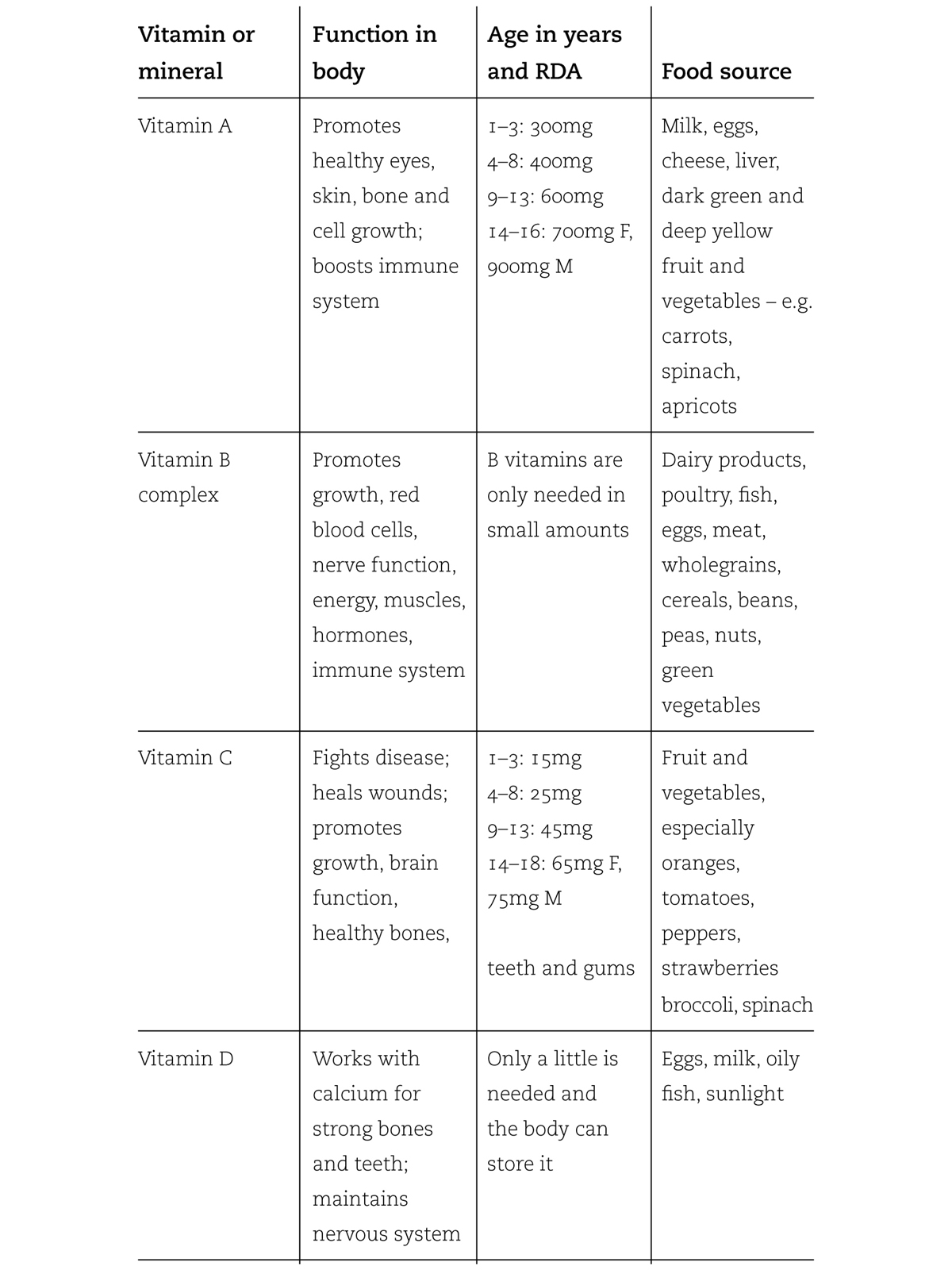
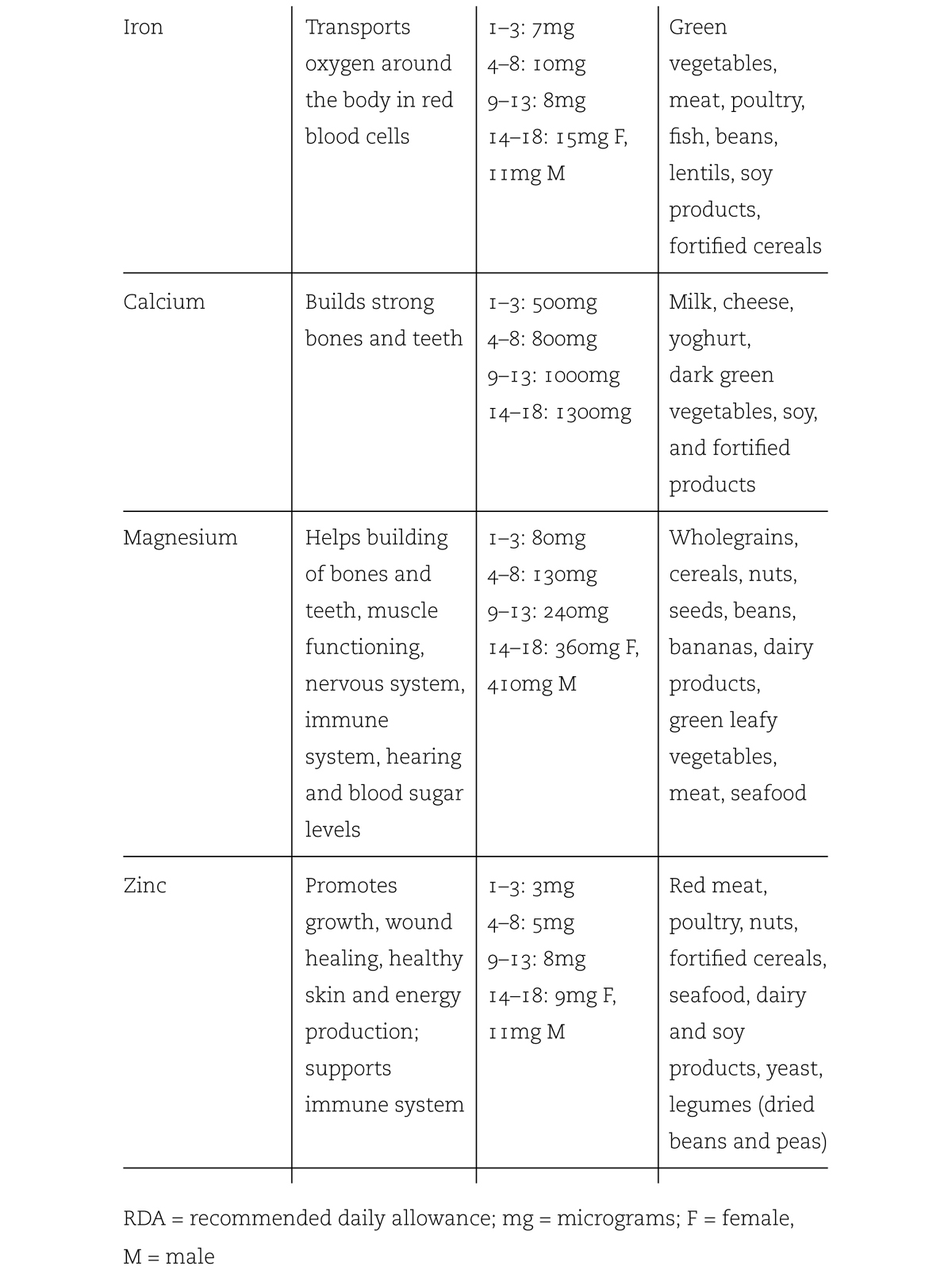
Although vitamins and minerals are just as important to the body as calories, and protein, carbohydrates and fat, we only need them in small amounts. As with all nutrients, if your child is eating a well-balanced diet that includes fresh fruit and vegetables they will have the daily intake of vitamins and minerals that are essential for growth, development and maintaining a healthy body and mind.
Fluid
Notice I haven’t said water, because fluid can be obtained from many different sources including soups, fruit juices, milk, vegetables and fruit – tomatoes, grapes, melons and oranges, for example, are 90 per cent water. It is vital a child has sufficient fluid intake, as much as it is that a child eats. The human body is 63 per cent water and the brain 77 per cent. Drinking regularly, and so keeping the body and brain hydrated, is therefore essential for body and brain to function in a child or adult. By the time a child is saying they are thirsty they are already dehydrated, and even mild dehydration can cause headaches, tiredness, loss of concentration and irritability.
Salt is added to most snacks and processed food and salt is a diuretic: that is, it makes you wee more, which results in dehydration if the lost fluid is not replaced. Children are more prone to dehydration than adults, as a result of diet (such as salty snacks) and activity (fluid is lost in sweat), and because they can forget to drink. Also, the school routine doesn’t always offer enough opportunity for children to drink during the day.
Trials have shown that if children take a bottle of water into school, and are encouraged to drink at regular intervals during the day, there isn’t the dip in concentration and learning that is often experienced in late morning and afternoon. The ideal drink for children is water, but if your child really won’t drink water, then lightly lace it with additive-free squash or fruit juice. Your child should be drinking regularly throughout the day, and apart from the fluid obtained from soups and fruit, etc., he or she should drink 1.5–2 litres a day, or more if they are very active or the weather is hot.
Конец ознакомительного фрагмента.
Текст предоставлен ООО «ЛитРес».
Прочитайте эту книгу целиком, купив полную легальную версию на ЛитРес.
Безопасно оплатить книгу можно банковской картой Visa, MasterCard, Maestro, со счета мобильного телефона, с платежного терминала, в салоне МТС или Связной, через PayPal, WebMoney, Яндекс.Деньги, QIWI Кошелек, бонусными картами или другим удобным Вам способом.






